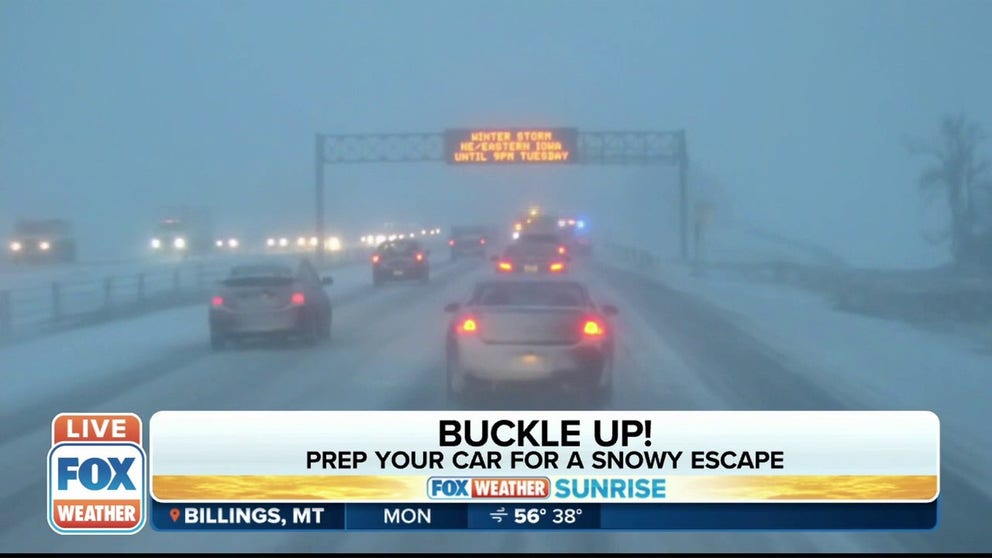When is the first snow of the season?
In many areas of the US, the season's first snowfall arrives well before the start of winter.
When can you expect the first snow of the season?
Many parts of the United States can see their first snow during the fall.
Winter might still be months away, but many parts of the U.S. can see their first snow during the fall.
While we can’t tell you exactly when the season’s first snowflakes will fall at your house, we can give you an idea of when that typically happens based on average weather conditions over many years.
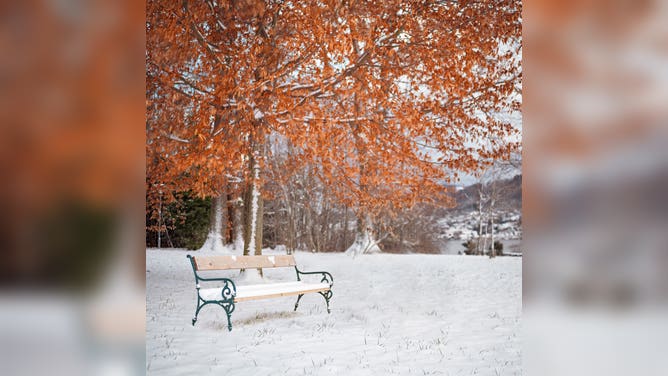
A snowy autumn scene.
(Photo by Simon Berger on Unsplash / FOX Weather)
The map below shows the average date of the first measurable snow across the Lower 48 states, according to the most recent 30-year climatological averages (1991-2020) from NOAA's National Centers for Environmental Information.
Measurable snow is defined as an accumulation of at least 0.1 inches, so if the season's first snowflakes don't stick to the ground, it's not considered the official first snowfall in the weather records.
Keep in mind, however, that the weather doesn't always follow what's considered average. A strong cold front could provide the season's first snow days or even weeks earlier than what's shown on the map below. On the other hand, an upper-level area of high pressure that persists into the fall could push the first snowfall of the season later than the date indicated on the map.
STRONG EL NINO WINTER: WHAT KIND OF WEATHER YOU CAN EXPECT
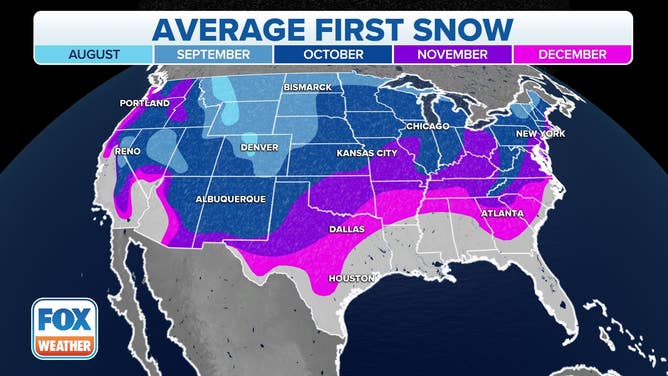
Average date of the first snowfall of the season.
(FOX Weather)
September or earlier
Believe it or not, the highest peaks of the Rockies can see snow as early as late summer.
By September, the Washington Cascades, Bitterroot Mountains along the Idaho-Montana border, the highest peaks of the Colorado Rockies, and the western High Plains see their first flakes in an average year.
HOW COLD DOES IT HAVE TO BE TO SNOW?
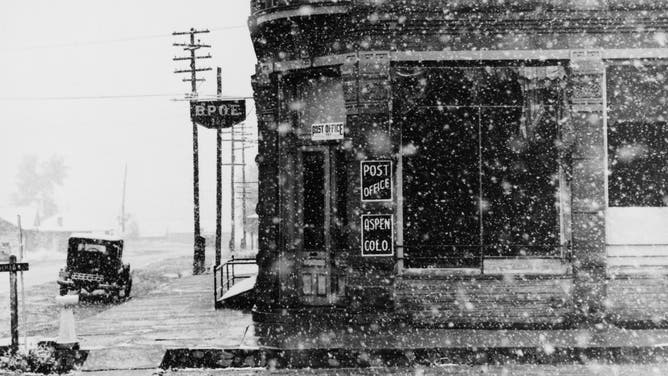
Viewed through a snowstorm, the post office in Aspen, Colorado, September 1941.
(Marion Post Wolcott/Office of War Information/FPG/Archive Photos / Getty Images)
October
In the Northeast, the season's first snow typically occurs in October in northern and western New England, upstate New York and from the higher elevations of central and western Pennsylvania down into the central Appalachians.
In the Midwest and Plains, areas from Michigan and northern Ohio into the Dakotas, western and northern Kansas and the Texas and Oklahoma panhandles see their first snow during October in an average year.
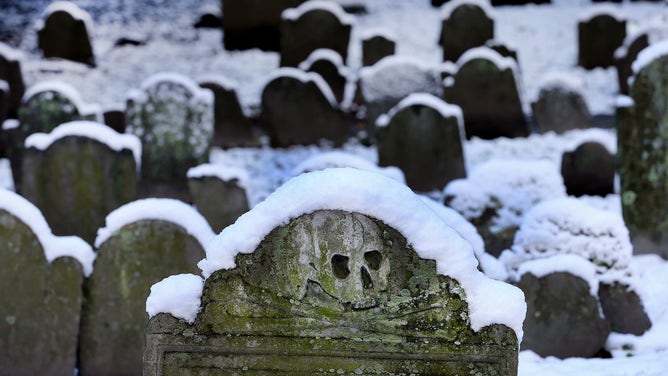
Snow covers the tops of the old gravestones on Halloween morning in the historic Granary Burying Ground in Boston, where some of America's most notable citizens are buried, on Oct. 31, 2020.
(John Tlumacki/The Boston Globe / FOX Weather)
In the West, October typically ushers in the season's first snowfall in Wyoming, eastern Idaho, the lower elevations of Montana, Utah's Wasatch Range, Colorado's foothills and mountain valleys and the mountains of New Mexico.
November
Much of the Northeast will receive its first snowfall of the season by November in an average year. This includes the Interstate 95 corridor from Boston to Richmond, Virginia.
MEDICAL EXPERTS WARN SHOVELING SNOW CAN BE DANGEROUS TO YOUR HEALTH
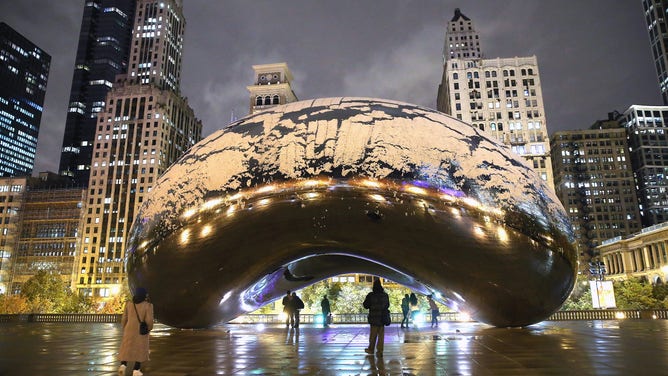
Snow collects on Cloud Gate (also known as The Bean) in Milennium Park on November 11, 2013 in Chicago, Illinois. The snowfall was the first of the season for the city.
(Scott Olson / Getty Images)
In the Midwest and Plains, November usually brings the season's first snow to much of the Ohio Valley, parts of the southern Great Lakes, the Corn Belt, southern and eastern Kansas and parts of Oklahoma.
In the West, the first snow typically falls in November in southwestern New Mexico, parts of Arizona and the Pacific Northwest.
What to know when you're driving in the snow
Melanie Lieberman, Senior Travel Editor at The Points Guy, provides some advice on winter road traveling tips.
December
Most areas from the southern Plains to the Southeast don't usually see their first snowfall of the season until December. This includes the Dallas-Fort Worth Metroplex and Nashville, Tennessee, according to the averages calculated by NOAA.
HOW TO WATCH FOX WEATHER ON TV
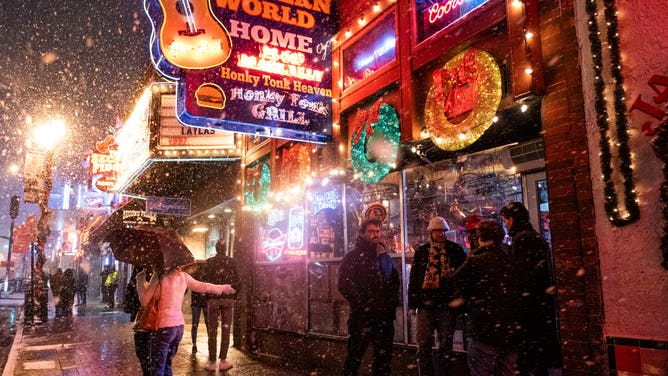
Snow falls on Broadway, a popular tourist street in Nashville, Tennessee, on December 22, 2022.
(SETH HERALD/AFP / Getty Images)
SNOW IN AMERICA'S ‘HEATLAND’: THE ZANY TIMES IT SNOWED IN SOME OF THE COUNTRY'S WARMEST PLACES
January or later
Many Southern locations of the U.S., from the eastern Carolinas to central and southern Texas, might not pick up any snow in an average year. This is especially true along the Gulf Coast and in Florida.
If it does snow in these places, it's typically not until January or February when average temperatures dip to their lowest point of the year.

